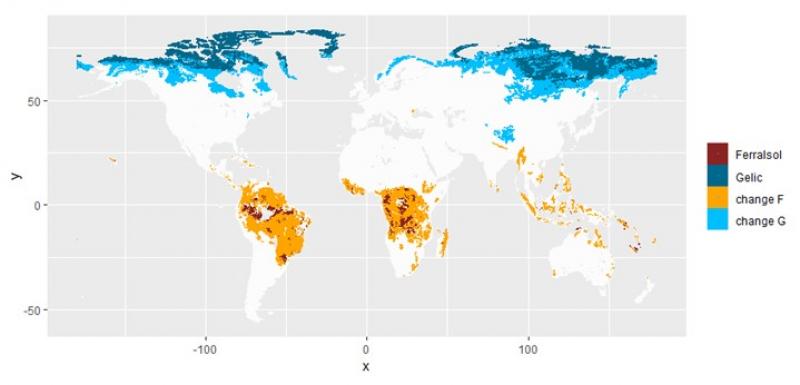The soil organic carbon pool can strongly affect the carbon cycle and future global warming. However, the dependence of carbon storage on climate is still not well understood. This project contributes to understanding the role of mineralogy and the representation of erosion, both strongly dependant on the soil nature that evolves permanently through time under climate action by :
i) assessing the change in soils and associated properties at the 2100 horizon at the global scale (OT- Med);
ii) implementing an erosion module to the ORCHIDEE-CROP models to better represent the lateral carbon, nitrogen and phosphorous fluxes (BASC).
To this end we
i) develop a statistical approach, to evaluate the link between soil classes and climate, and to derive the potential soil changes (OT-Med) at global scale from this analysis ;
ii) derive the changes in carbon storage in soils from the obtained soil projections, and associated soil characteristics, using simulations by LPJmL (OT- Med) and ORCHIDEE-CROP models (BASC) at both French and Mediterranean scales,
iii) estimate, using the erosion module, the gain or the losses of nutrients and thus the necessary inputs to maintain fertility in places facing a net decrease of nutrients due to erosion (BASC). To totally close the carbon budget of soils, we estimate the C emissions due to fertiliser productions needed to compensate the effect of erosion or the modifications of fertility due to modifications of soil properties (BASC).
iv) based on these estimations, we calculate the economic cost of inaction (nothing done to prevent soil erosion) vs. action (modification of practices to reduce erosion - BASC)



